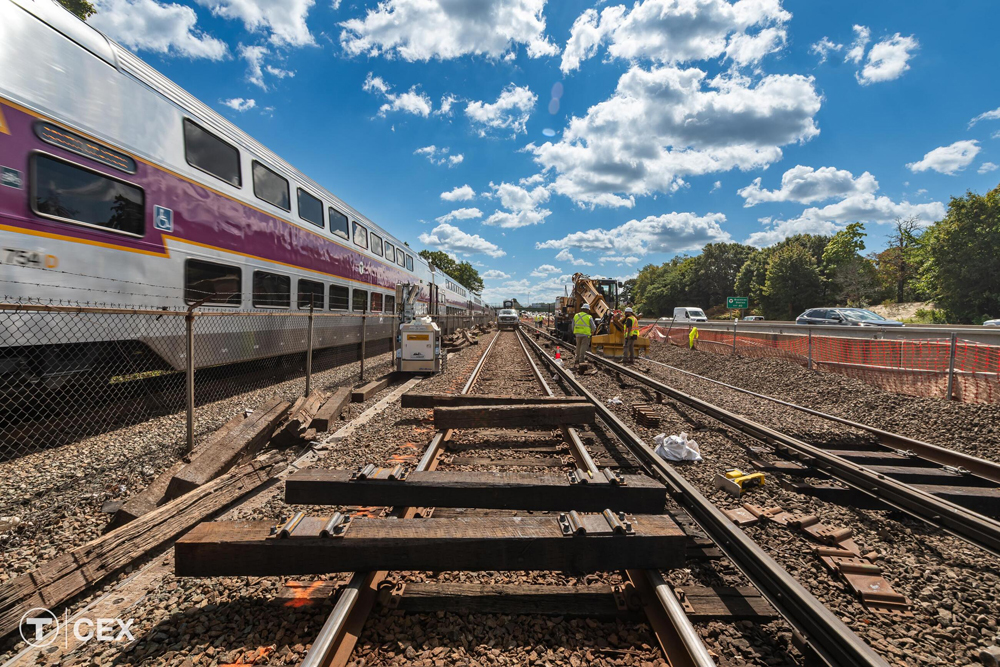
BOSTON — The Massachusetts Bay Transportation Authority eliminated 37 speed restrictions on an 18-mile section of track during a 24-day shutdown of a portion of its Red Line Braintree Branch, the transit agency says.
Work was conducted between the JFK/UMass stations from Sept. 6 to Sept. 29, with one day of work also extended onto the Ashmont Branch on Sept. 28. The resulting repairs have improved round-trip travel times on the Braintree Branch by up to 24 minutes, the MBTA says.
“I couldn’t be prouder of the workforce that supported and delivered long awaited work for our riders,” MTBA CEO Phillip Eng said in a Sept. 30 press release. “Hundreds of on-site workers replaced nearly 70,000 feet of rail and over 17,000 ties on the Braintree Branch, nearly doubling the amount of ties replaced during the entire systemwide Track Improvement Program. … The work accomplished has allowed us to immediately raise train speeds back to our current maximum speed of 40 miles per hour, returning over 20 minutes of roundtrip travel time to Braintree riders as we now work to further improve travel times along stretches of this Branch where possible.”
More than 600 workers were involved in the project. Additional operator training, and more service and schedule planning will be required before speeds are increased above 40 mph.
Along with the rail and tie replacement, the project saw resurfacing and tamping of approximately 86,000 feet of track; replacement of more than 2,000 spot plates, 3,500 third-rail insulators, 8,050 feet of guard rail, 1,500 feet of third-rail heating elements, and rail replacement at four switches. Related work during the service suspension included repair of a pedestrian overpass at JFK/UMass, roof replacement at JFK/UMass and North Quincy, a variety of other station repairs, and inspections or repairs at the Furnace Brook, DeVaugh, and Anderson bridges.














How much had the T let track maintenance go ?
The T would need to answer that question. All I can say is that I’ve rode the T (or predecessor MTA) all my life. Never heard of shutdowns like these occuring now.
What does this mean for red line operations? Will MBTA just reduce the number of trains operating on the red line to allow for the same separations as before?. Or will it keep the same number of trains and dispatch them closer to each train?
Quiz for today is the location of the photo. Red Line and Commuter rail are adjacent in all three cities, Boston, Quincy and Braintree. From the shadow pattern from the crossties, it seems that the camera faces south. This places the Commuter Rail to the east side of the Red Line, which means Braintree.
Rail archeology buffs whose interest goes WAY WAY WAY BACK to America’s first railroad, the Granite Railway, would know the territory to the north of this site, in Quincy. That would be only Granite Railway R/W segment which survived the building of the I-93 Southeast Expressway in the early 1950’s.